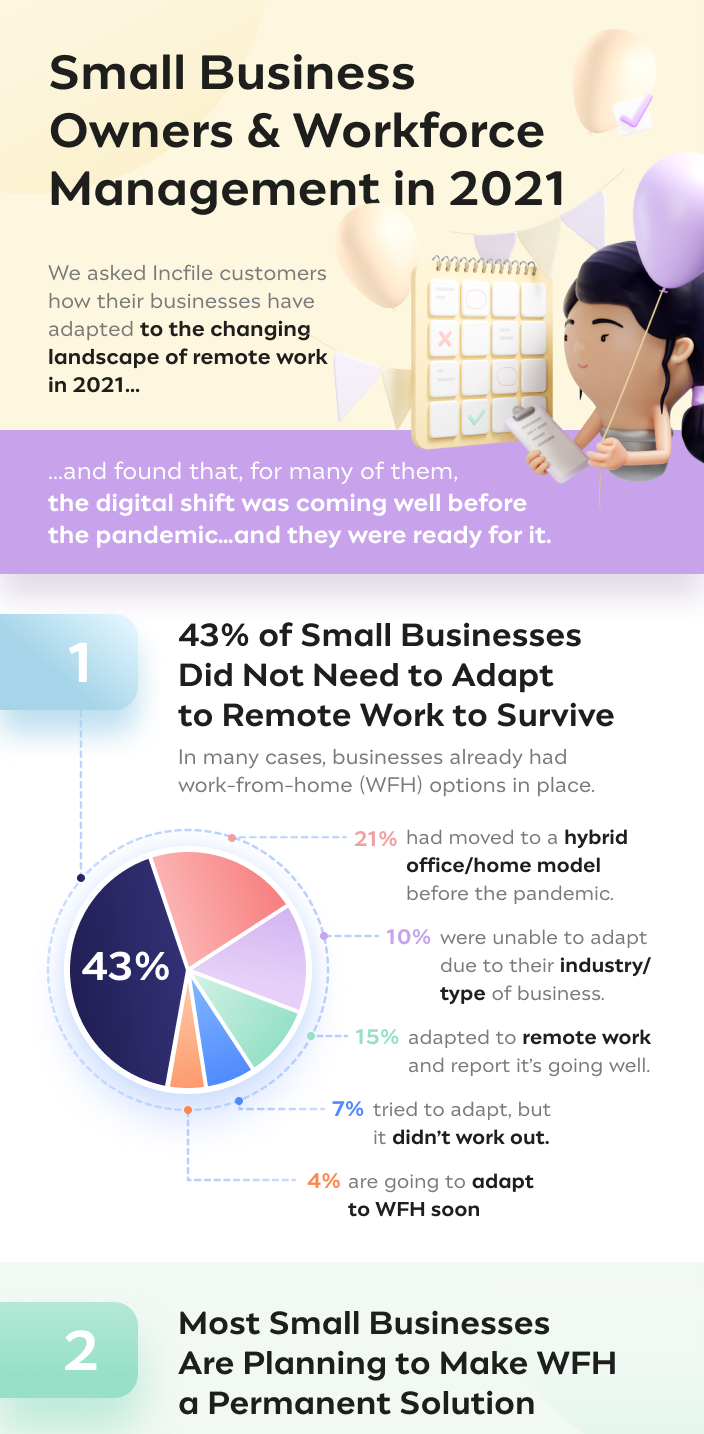In a recent survey, Incfile found that most small businesses were prepared for the digital shift in the workforce before the pandemic. The data shows that employees and employers alike are leaning more toward remote options, including hybrid solutions that allocate more time at home. Many companies either planned, adapted to or successfully transitioned into a remote or hybrid model. A majority of small businesses are reducing in-office time, where 47% plan to make WFH permanent. Meanwhile, 37% are looking at hybrid options. The survey also found that the most popular remote work tools include video conferencing, accounting/bookkeeping software, cloud storage, social media management tools, and email marketing apps. A majority of businesses already had the technological infrastructure in place to pivot during the pandemic.
When it comes to company culture, 53% of companies felt that “working remotely integrates naturally with their culture.” In order to increase employee engagement, they hope to use video conferencing to foster connections. Some are also planning to schedule face-to-face meetups and are actively looking for other ways to increase employee interactions.
Cost savings has emerged as another benefit of going remote, where small businesses are reinvesting the funds that would typically be allocated to office leases. They are able to use the money to hire better talent, expand the company and increase marketing and sales budgets. Hiring full-time permanent employees has also slowed down, where 44% of small businesses are mainly hiring contractors, freelancers, consultants, and temporary workers. Many leaned on sites like LinkedIn and Indeed for new hires. They also found talent through platforms such as Fiverr and Upwork. Overall, many small businesses, aside from financial losses due to the pandemic, were agile and able to adapt to the digital transformation brought on through increased remote work.
(Click on the Image For Full View)
Infographic Source: Incfile


